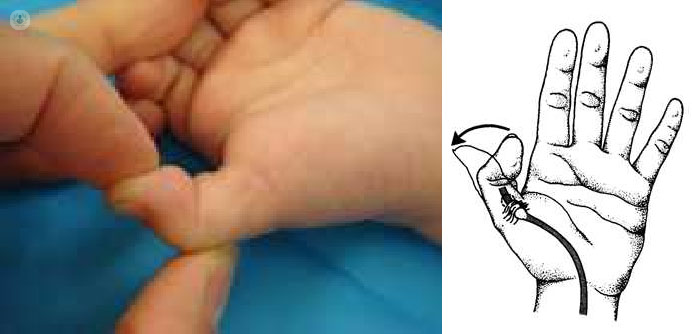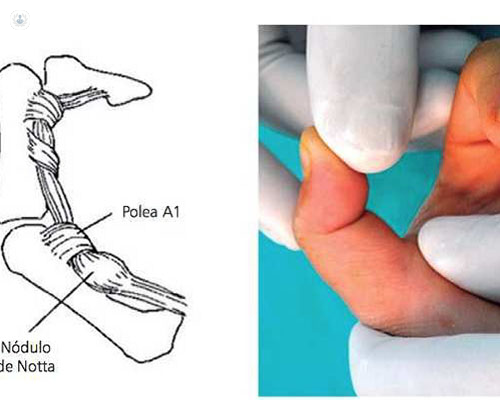What is the thumb in spring or trigger finger?
Written by:The thumb in spring or trigger finger is a relatively frequent pathology in Children 's Orthopedics , which is characterized by achieving full extension of the thumb. Occasionally, the flexion-extension movement of the interphalangeal joint of the thumb can be performed with an audible and sometimes painful click, a situation that eventually causes discomfort and discomfort in the child when taking objects.
Causes of thumb in spring
The cause of the thumb in spring is unknown. It seems that one of the "pulleys" that hold the tendon that moves the tip of the finger is somewhat narrow, a fact that causes a thickening of the tendon (nodule) that finally prevents the fluidity of movement.
This pathology usually occurs after the first year of age, and is caused by a discrepancy between the size of the long flexor tendon of the thumb and a reflection pulley located at the base of the finger. The reflection bands or pulleys serve for the tendon to have a correct function and do not separate from its parallel path to the bone. When the tendon is thicker than the size of the pulley, it rubs inside, becomes inflamed and ends up producing more thickening and more difficulty of passage, with the so-called Notta Nodule. At the moment when the thickened area of the tendon passes to one side and to the other of the pulley in the movements of the finger,. (Figure 1)

Thumb in spring: diagnosis and treatment
The diagnosis consists of realizing in the first moments when a highlight or a click is noticed when the child bends and / or stretches the finger. If the process does not resolve spontaneously, the finger will remain locked with the tip of the thumb in a flexed position, producing pain due to the forced extension.
Largely, the solution is a surgical procedure, and the process consists of opening the pulley, which allows to completely recover the mobility of the finger.
Once the child reaches the age of life and the size of the structures of the hand allow, the time comes for safe surgery. The surgical intervention is performed by making a longitudinal cut in the reflection pulley to release the tendon and it is verified that the finger can move freely without the tendon being trapped. All this is done by general anesthesia, and the base of the thumb can also be anesthetized locally so that it does not hurt during the postoperative period.

Usually, the results of the intervention are excellent and the child recovers mobility immediately and painlessly. However, in a small percentage of cases it has been seen that it can relapse despite performing the technique properly.
It is noteworthy that, sometimes, this process is bilateral affecting the two thumbs and does not have to coincide simultaneously, so we will have to perform two surgeries and not act prophylactically.
For more information consult the traumatologist .


